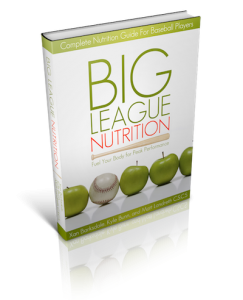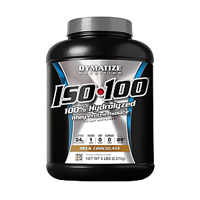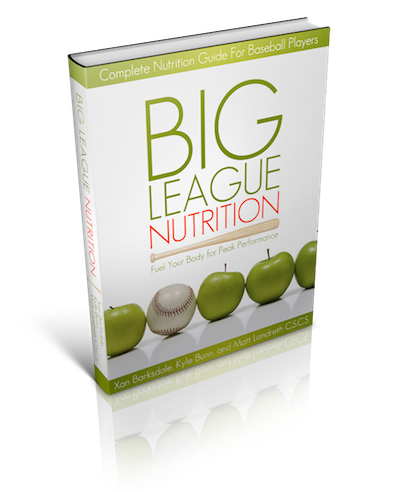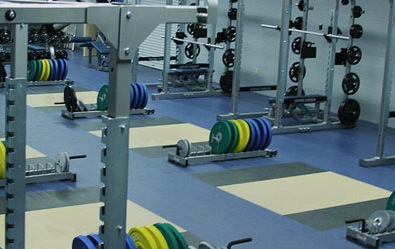
Baseball is a unique sport with very specific physical demands placed upon each athlete who takes the field. Why is it then, that so many players, coaches, and parents are lost when it comes to baseball strength training?
Anyone who has been in the game long enough knows that baseball players need to be strong, fast, powerful, flexible, and durable. The best way to develop these attributes is to incorporate a year round strength and conditioning program.
There Is No Perfect Baseball Training Program
Many players and coaches are searching for the perfect training program. Unfortunately, you cannot find one. Every athlete has different needs based on sport, position, and basic individual differences. This is very important for baseball players and coaches to understand – no two players are the same.
However, there are some basics that every baseball strength and conditioning program should include:
- Pre-hab work focusing on shoulder, hip, and back mobility and strengthening
- Soft Tissue Work
- Dynamic Warm-up
- Power-based movements that include plyometrics and medicine balls
- Basic strength movements such as the deadlift and squat
- Rotational and Anti-rotational movements
- Baseball Specific Conditioning
- Flexibility Work
Again, these are basic foundations that you should look for in any baseball training program.
That being said, baseball players cannot expect to get in “baseball shape” and stay in shape by just playing the game. There needs to be consistent effort day in and day out. Off-season, pre-season, and in-season baseball training programs need to be implemented for maximum results.
Let’s take a look at what a an entire year looks like at the high school, college, and professional levels.


As you can see, the high school and college seasonal breakdowns are roughly the same.
While college baseball has a uniform start date, the actual collegiate season could end in May or June depending on a team’s post-season success. However, most college ballplayers continue playing through the summer in collegiate summer leagues throughout the country. So, we’ll consider “summer ball” as in-season. The same goes for high school.

When we look at professional baseball, again, we have a uniform start date at the beginning of April and depending on the post-season chances of a given team, the season could end in September or October. Granted, MLB playoffs have been extended and now end in November. However, a majority of players making their way through the minor leagues will finish their respective seasons in September. As for the professional pre-season, this is just noted by the beginning of Spring Training when pitchers and catchers report in mid-February.
Designing A Baseball Strength Training Program
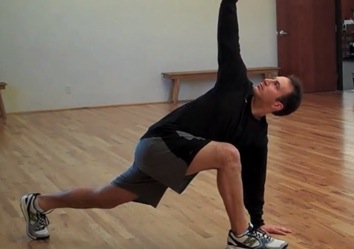
Looking at the charts above, we can see that there are three distinct training periods throughout the year. Based on what time of year it is, baseball players and coaches can design strength training programs accordingly.
The entire year should be set up in a periodized fashion that works toward consistency for the athlete while also allowing for variations to be made to exercise selection, sets, reps, and weight. Consistency is key in allowing the body to adapt to the training stresses placed upon it. Variation is important so as to keep challenging the body. If it does not challenge you, it does not change you.
Training Phases
To keep it simple, we can breakdown each “season” into its various months, where each month is a new phase of 4-5 weeks.

Off-Season
Overall goals — Recover from previous season, rehabilitate existing/nagging injuries, develop a strength and conditioning foundation for the following training year
- Phase 1 — Begin recovery work from the season that just ended. If needed, rehabilitate existing injuries. Begin a general strength program. Do not pick up a baseball – give the arm a break from throwing.
- Phase 2 — Continue rehabilitation of any lingering injuries. Evaluate Phase 1 and make necessary changes to general strength program. Begin adding some medicine ball work and plyometrics. If all injuries are gone, begin baseball-specific conditioning work. Soft tissue and flexibility work needs to be consistent. Continue to hold off on any throwing.
- Phase 3 — Unless injuries were season-ending, any nagging issues should begin to fade by Phase 3 (month 3). Again, evaluate the previous phase and edit/progress the program as necessary. Volume of power-based movements such as medicine ball work and plyometrics should increase. Certain precautions should be considered for any overhead lifting and heavy upper body work. Upper body pulling exercises should balance out pushing exercises. Depending on the individual, some pushing exercises could be eliminated. Soft tissue and flexibility work needs to be consistent. Outside of the weight room, throwing should begin near the middle to end of the month, and a long toss program should start to be implemented. Throwing can still be put on hold until Phase 4 as well.
- Phase 4 — As the off-season comes into its final phase, the ballplayer should really be clicking on all cylinders now. Lots of medicine ball work. Volume of plyometrics can remain similar to the previous phase. Deadlift and squat variations should be a staple in the program by now. Continue to strengthen the back with pulling exercises. Bench press variations are okay, but depending on the individual it may be better to consider push-up variations that place less strain on the throwing shoulder. If you have not yet started a throwing program, now is the time to pick the ball and glove up again. Any throwing program should have the ballplayer throwing 3-5 times per week by the end of the off-season. That’s right, continue your soft tissue work. Your body will thank you for it later.
Pre-Season
Overall goals — Improve upon strength and conditioning foundation gained in off-season phase, develop more baseball-specific speed, strength, and power
- Phase 1 — We really want to convert all that strength gained in the Off-Season phases to power. As the number of on-field practices increases, along with the athlete’s throwing program, we need to be smart about increasing power-based movements and baseball-specific conditioning such as sprints, sled work, shuttle runs, and medicine ball work. Continue to lift heavy with your bigger movements of deadlifts and squats. Soft tissue work and flexibility training will be your keys to recovery.
- Phase 2 — Evaluate pre-season Phase 1 and make the necessary adjustments. There’s no need to get cute now or make any big changes. A few eliminations/additions of certain movements and exercises are all you need here. The season is only about 6 weeks away now.
- Phase 3 — Typically a shorter phase of 2-3 weeks depending on when your actual season begins. But like Phase 2, just make a few adjustments and get ready to begin the season with an explosive start. Some coaches would suggest a de-load week prior to Opening Day to make sure the body is well rested and ready to go.
In-Season
Overall goals — Maintain strength, speed, and power from off-season and pre-season phases, maintain flexibility, maximize recovery between practices and games
- Phase 1 — As the season has just begun, we usually take the beginning of the baseball in-season training program a bit lighter in terms of volume so the ballplayer can adjust to the addition of games to his schedule. As we get in to weeks 2 and 3 of this phase, we can increase a few exercises to 2 or even 3 sets. Again, it’s all dependent on the ballplayer and his individual needs. Medicine ball, jumping, and other power-based movements can continue to be performed although at a much lower volume. The fact that the athlete is now playing his sport should provide plenty of on-field movements aimed at quickness and speed. Mobility drills, flexibility work, and foam rolling should be an everyday habit.
- Phase 2-3 — As we approach the middle half of the season, the athlete really needs to evaluate his particular needs. Are his strength levels staying consistent? Is he picking up nagging bumps, bruises, or injuries? Is he better suited to limit his strength training volume and focus on his recovery methods, or can he still work in a strength exercise or two? Whatever is designed must be easily adaptable to the athlete’s changing needs as the season wears on.
- Phase 4-6 — Similar to Phases 2-3. Take an individual approach. Things that should be considered are whether or not you are in post-season play, your injury status, and whether or not you a regular starter or come off the bench. Be smart and finish the season on a high note.
With a structured plan for each phase, baseball players and coaches can focus their attention on the goals of a particular phase. Each phase should also plan recovery or de-load periods to give the body a chance to rest, repair, and become stronger. These rest periods can come between exercises during a specific training session, between training sessions during a training week, or even between training phases.
How Often Should Baseball Players Strength Train?
As discussed before, every athlete needs to determine his own recipe for success. Some ballplayers need to be in the gym four days a week. Others can accomplish their work in a three day per week program.
Furthermore, it may depend on the time of year. An in-season program may call for only one or two training sessions per week, where an off-season program can be four or five days per week.
Other considerations should include the number of baseball practices and games in a given week, whether or not the ballplayer is in-season for another sport, and if there are any injuries from which the athlete is recovering.
A Word on Baseball Nutrition
Baseball players can have the best structured training program and achieve results by staying consistent, however, they can still be limited by their nutrition plan or lack thereof.
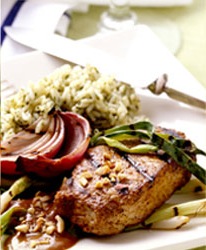 Many ballplayers, coaches, and parents do not have the slightest clue when it comes to eating for performance. Again, there is no secret formula here, and every athlete will have to assess his own nutritional needs to find out what works best for him. But, here are some basic guidelines that every baseball player should consider when looking at a baseball nutrition game plan.
Many ballplayers, coaches, and parents do not have the slightest clue when it comes to eating for performance. Again, there is no secret formula here, and every athlete will have to assess his own nutritional needs to find out what works best for him. But, here are some basic guidelines that every baseball player should consider when looking at a baseball nutrition game plan.
- Begin everyday with breakfast.
- Take a multivitamin.
- Smaller, more frequent meals throughout the day is a better approach than having just three meals a day.
- Include a protein source with every meal. The leaner the better.
- Stay hydrated by drinking water. Watch out for empty calories in juices and sports drinks.
- Grab a protein shake or bar after a strength training session in order to get rapidly absorbing nutrients into the body.
Baseball Training Methods
All of the information above can serve as a basic guideline to help you in your pursuit of performance excellence. However, this is just the beginning of learning how to train for baseball. Be sure to check out the Baseball Training Methods blog for more detailed articles regarding baseball strength and conditioning. The resource page is a fantastic source if you are looking for a particular program, a piece of training equipment, or other useful information.
Best wishes and good luck!
